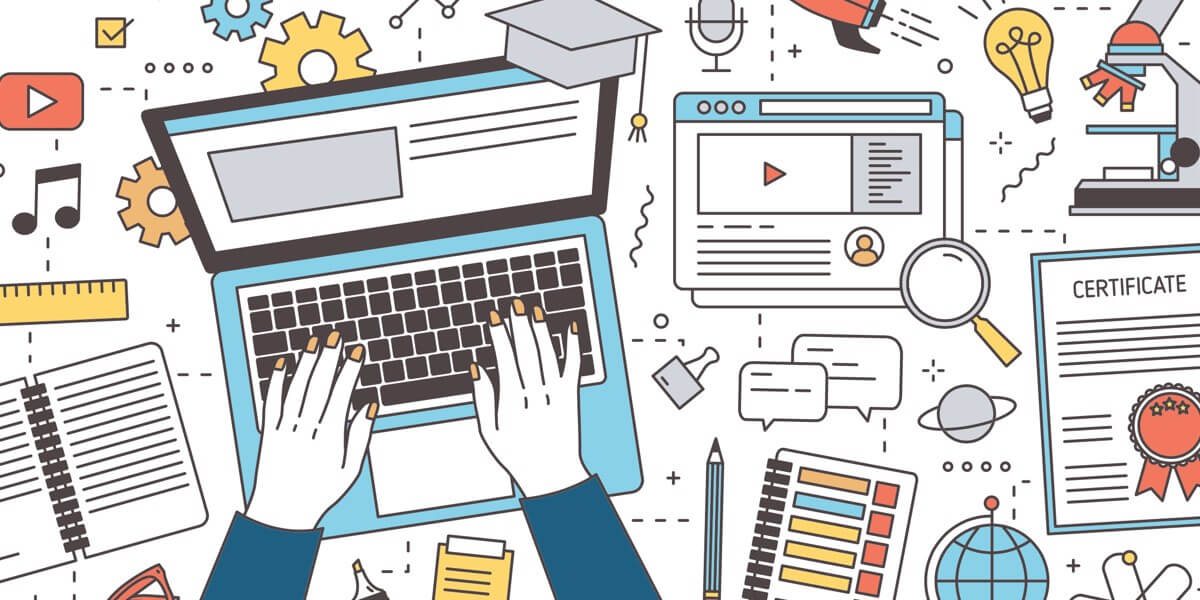You want to inspire the best in your team, and you also want them to cultivate the skills necessary to excel in their roles and help your organization succeed. One of the best ways to achieve both of these goals is by creating and implementing a learning and development program.
Learning and development programs (also known as L&D) help leadership identify the skills necessary to keep their organization moving forward, evaluate where their employees stand with those skills, and develop a learning program to help fill in any gaps and ensure their teams are set up for success, both on an individual and organizational level.
But developing an L&D program is only the first step. If you want it to make a lasting impact on your company, you need to successfully introduce that program to your team — and ensure they leverage it to sharpen their skills and continue to grow as employees.
Let’s take a closer look at learning and development programs, why they’re important, and how to create and implement one successfully.
Why L&D Programs Are Important
Before we jump into how to roll out a learning and development program, let’s touch on why an effective learning and development program is so important to begin with.
The first reason has to do with your employees. “Employees...crave learning, growth, and development opportunities. They also thrive on feedback and guidance,” said Halelly Azulay, CEO of consulting firm TalentGrow, creator and host of The TalentGrow Show podcast, and author of Employee Development on a Shoestring. “The best way to keep employees motivated, engaged, and productively contributing is to help them learn fast and continue iterating their skill set and knowledge base, as well as growing their network of mentors, advisors, allies, and advocates. Learning and development programs play an important role [in that process].”
When your employees feel like they’re working in a culture that supports and fosters their career growth, they’re more likely to feel satisfied at work, which can help you retain top talent within your organization.
“High performance people want to keep developing. They know that the more skills they have, the more likely they are to advance,” said Amy Lafko, owner and principal of the Philadelphia-based organizational consulting firm Cairn Consulting Solutions. “An effective learning and development program keeps good employees with your organization. They want to stay for the next opportunity to grow, instead of seeking a new job that offers development.”
Learning and development programs are a huge benefit to your employees, but they also benefit your company. Because you’re deliberately identifying skills gaps within your employees, and then creating programs to fill those gaps and develop those skills, you’re cultivating a team that’s perfectly poised to move your company toward its goals and objectives.
“An effective learning and development program creates a deep bench of people with a variety of skills who are ready to fill any gaps in the organization,” Lafko explained.
It follows that effective L&D programs should therefore be a key component of your organization’s HR strategy. Here are seven steps for rolling one out successfully.
1. Assess your needs.
Before you can develop an L&D program that helps your organization get where you want it to be, you need to get crystal clear on where, exactly, you’re trying to go.
“A core element [of a learning and development program] is a needs assessment for each role in the organization,” said Lafko. “Determine what technical and soft skills are competencies for that role. Once you've got that, you can tailor your learning and development program to meet the needs of the role and the organization.”
When you have a clear picture of what you need from each role, you can better assess your employees, identify any skills gaps, and make sure your L&D program addresses those gaps and sets your employees up for long-term success.
2. Make it personal.
If you want your learning and development program rollout to be successful, you can’t take a one-size-fits-all approach. Instead, you need to tailor the program to each individual employee.
“Create development programs that are unique to each employee,” Azulay advised. “Set development goals that take into consideration each employee’s learning needs, learning preferences, contextual barriers, and learning style.”
You should also plan to deliver your L&D content in different formats (like video, written content, and live trainings); that way, you can provide a variety of learning styles and ensure your team is engaged with and absorbing the content, no matter how they prefer to learn.
“Allow for a variety of channels, media, and types of learning content delivery to fully engage your diverse workforce where they’re at and how they learn best,” Azulay said.
3. Drive employee buy-in.
It doesn’t matter how comprehensive your learning and development program is — it’s only going to be successful if your employees are actually invested in it, which is why you need to generate employee buy-in from the beginning.
The best way to get your team on board with your L&D program is by articulating how the program will benefit them; if it’s clear how they’re going to grow from participating, they’ll be more engaged, and the rollout will be more successful overall.
“Focus most on the ‘What’s In It For Me (WIIFM)’ for the employee,” said Azulay. “How do the learning and development program assets help them grow in their current role, how do they help position them for growth into their next desired role, and what are the ways in which they will benefit by engaging? Articulate these benefits explicitly to gain buy-in.”
4. Integrate informal learning opportunities.
Every L&D program needs structured learning, whether that’s in the form of video modules, in-person workshops, or training events.
But if you want your rollout to be successful, you need to go beyond the structure of the program and integrate opportunities to implement the program learnings into your team’s day-to-day experience.
“Relying on annual, or even quarterly, training ‘events’ will simply no longer cut it in the new workplace paradigm; employers need to be strategic, intentional, and proactive about informal learning, too,” Azulay said. “Learning and development programs that take informal learning into account will be more likely to succeed.”
To put this into action, “provide employees guidance on ways to develop and grow outside the classroom and on the job,” Azulay said. “Help them design development goals and strategies that happen in many different ways throughout their year, quarter, month, week, and day.”
For example, you might pair up employees and have them act as accountability partners, encouraging each other to work the concepts they’ve learned in their L&D program into their roles. Or you could schedule an informal coffee meeting, in person or remotely if need be, with a new employee every week, during which time they can ask questions about the topics they’ve been learning and how to implement them. However you approach it, think outside the box about ways to provide your employees with as many opportunities as possible to integrate their learnings into their day-to-day tasks and responsibilities.
5. Carve out time for your employees to participate.
One of the most important elements of an L&D rollout is ensuring you’re giving your employees the time they need to fully engage with the program — and that that time is on your clock, not theirs.
“I get so frustrated when organizations say we want to ‘reward’ our high performers with a development program — that [is then scheduled] during their lunch break or on weekends,” said Lafko. “If the leader believes this is an effective program, then the ROI will outweigh the time lost for training.”
6. Celebrate successes along the way.
Learning and developing new skills can be tough. If you want your employees to continue to engage with your L&D program, it’s necessary to give them support, encouragement, and positive reinforcement along the way.
“Encourage progress checks and build in celebrations of both progress [and] small and large successes,” Azulay said.
For example, you might create a “celebration” board where employees can share their wins, management can recognize employees’ hard work, and team members can give shout-outs to other employees they see putting in the work and excelling in the L&D program. Or, every time an employee shares a win, big (like leveraging the learnings from the L&D program to close a deal or bring in a new client) or small (like powering through their first training module), they get to enter their name into a drawing, and at the end of the L&D program leadership chooses a few employees to recognize and receive a prize.
“When you see progress, say something,” said Lafko. “Celebrate the learning.”
7. Continue to adjust, adapt, and evolve your L&D program.
The last thing you’ll want to keep in mind when rolling out a learning and development program is that the rollout isn’t a “one-and-done” proposition; instead, you’ll need to continually adjust, adapt, and evolve your program based on your employees’ needs, development, participation, and feedback.
“Keep the process iterative and dynamic; no one is ever ‘done’ developing, so continue to revisit, course-correct, and keep development plans alive and current,” Azulay stressed.
“The real key to lasting success is to understand that L&D programs aren’t a single session and then you’re finished,” Lafko said. “It takes time for trial and error plus coaching and accountability so that new skills stick.”
—
Learning and development programs are an essential component in fostering the growth of your employees — and, by default, the growth of your organization. Now that you know how to roll out an L&D program effectively, all that’s left to do is put these steps into action and watch your team (and business) thrive.







